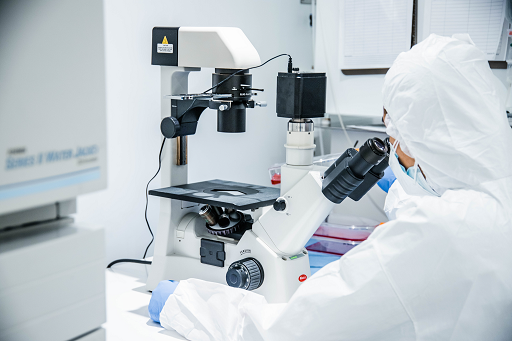Are you tired of living with the constant pain and limitations caused by spinal stenosis? If so, you’re not alone. Spinal stenosis affects millions of people worldwide and can significantly impact their quality of life. But what if there was a revolutionary treatment option that could provide relief and restore function to your spine? Enter stem cell therapy for spinal stenosis – an innovative approach that has been gaining attention in recent years.
In this blog post, we will explore what stem cell therapy is, how it works for spinal stenosis, its benefits, risks, success stories, research studies, and whether it may be the right solution for you. Plus, we’ll dive into why many individuals are choosing to undergo stem cell therapy for Spinal Stenosis in Mexico. So let’s get started on this exciting journey towards finding lasting relief from spinal stenosis!
Table of Contents
Understanding Spinal Stenosis
Spinal stenosis is a condition that occurs when the spaces within your spine become narrow, putting pressure on the nerves and spinal cord. This can lead to pain, numbness, and weakness in various parts of the body. There are two main types of spinal stenosis: cervical stenosis, which affects the neck region, and lumbar stenosis, which affects the lower back.
The most common cause of spinal stenosis is age-related changes in the spine, such as arthritis. As we get older, our bones and tissues naturally degenerate and may start to encroach upon the spinal canal. Other factors that can contribute to this condition include herniated discs, thickened ligaments, tumors, or cysts in the spine.

Symptoms of spinal stenosis can vary from person to person but often include pain or cramping in the legs or buttocks while walking or standing for extended periods (known as neurogenic claudication). Some individuals may also experience tingling sensations or muscle weakness in their extremities.
To diagnose spinal stenosis accurately, your healthcare provider may order imaging tests like X-rays or MRI scans. These will help determine if there is any narrowing of your spinal canal and identify potential causes for concern.
It’s important to note that while some cases of spinal stenosis can be managed with conservative treatments like physical therapy exercises or medications for pain relief – others may require more advanced interventions such as surgery. However, stem cell therapy for spinal stenosis has emerged as an exciting alternative treatment option worth exploring!
Treatment Options for Spinal Stenosis
When it comes to treating spinal stenosis, there are several options available. The appropriate treatment will depend on the severity of the condition and the individual patient’s needs.
Conservative treatments are often the first line of defense against spinal stenosis. These can include physical therapy, exercises to improve flexibility and strength, and pain medications. Additionally, lifestyle modifications such as weight loss and avoiding activities that exacerbate symptoms may be recommended.
For some patients, epidural steroid injections can provide temporary relief by reducing inflammation around the affected nerves. However, these injections typically need to be repeated periodically to maintain their effectiveness.
In more severe cases where conservative measures fail to provide sufficient relief, surgery may be considered. The goal of surgical intervention is to alleviate pressure on the compressed nerves or remove any structures causing narrowing in the spine.
Minimally invasive procedures such as decompressive laminectomy or minimally disruptive lumbar fusion have become increasingly popular in recent years due to their lower risk profile and shorter recovery times compared to traditional open surgeries.
Individuals with spinal stenosis need to consult with a healthcare professional who specializes in spine conditions before deciding on a treatment plan. They will be able to assess each patient’s unique situation and recommend an appropriate course of action tailored specifically for them.
What is Stem Cell Therapy?
Stem cell therapy is an innovative treatment option that holds great promise for patients suffering from spinal stenosis. But what exactly is stem cell therapy? Let’s dive in and explore this cutting-edge approach to healing.
At its core, stem cell therapy involves using a patient’s own stem cells to repair damaged tissues and promote regeneration. Stem cells are unique because they have the ability to develop into different types of specialized cells in the body. They can essentially become whatever type of cell is needed to restore function and heal injured areas.
These harvested cells from qualified donors are then processed and prepared for injection into the affected area, such as the spine in cases of spinal stenosis.

Once injected, these remarkable stem cells get to work, releasing growth factors and signaling molecules that stimulate tissue repair and reduce inflammation. They also have immunomodulatory properties, meaning they help regulate the immune system’s response, which can be beneficial for managing chronic conditions like spinal stenosis.
One of the key advantages of stem cell therapy for spinal stenosis is its minimally invasive nature. Unlike traditional surgery, which often carries risks and requires extensive recovery time, stem cell therapy offers a less invasive alternative with potentially shorter recovery periods.
While more research is needed to fully understand how effective stem cell therapy can be specifically for spinal stenosis treatment outcomes vary from person to person – many patients report significant improvements in pain levels/mobility after undergoing this regenerative procedure. It’s important however note that every individual case may differ so consulting with a healthcare professional experienced in this field would be highly recommended
How Does Stem Cell Therapy Work for Spinal Stenosis?
After harvesting the stem cells from the qualified donors, these potent stem cells are injected directly into the affected area of the spine, targeting damaged discs or joints. The injection is guided by imaging techniques such as ultrasound or fluoroscopy to ensure precise placement.
Once in place, these powerful stem cells get to work. They release growth factors and anti-inflammatory substances that help reduce pain and inflammation while stimulating repair processes within the body. This regenerative effect promotes new tissue growth and improves overall function in patients with spinal stenosis.

One notable advantage of using stem cell therapy for treating spinal stenosis is its minimally invasive nature. Unlike traditional surgical procedures that require extensive incisions and lengthy recovery periods, this innovative approach involves only small injections with minimal downtime.
While research on this emerging therapy continues to advance, early studies have shown promising results. Patients who have undergone stem cell therapy for spinal stenosis report significant pain relief and improved mobility after treatment. It’s important to note that not all cases may be suitable for this type of treatment; therefore consultation with a medical professional is essential to determine if stem cell therapy is the right option for you.
The Benefits of Stem Cell Therapy for Spinal Stenosis
When it comes to treating spinal stenosis, there are a variety of options available. One emerging and promising treatment is stem cell therapy. Stem cells have the unique ability to differentiate into different types of cells in the body, making them an ideal candidate for repairing damaged tissues.
One of the major benefits of stem cell therapy for spinal stenosis is its potential to promote tissue regeneration. By injecting stem cells directly into the affected area, they can help stimulate new cell growth and repair damaged tissues in the spine.

Another benefit of stem cell therapy is that it is a minimally invasive procedure. Unlike traditional surgery, which often requires large incisions and lengthy recovery times, stem cell therapy involves a simple injection that can be done on an outpatient basis. This means less pain and downtime for patients.
Additionally, stem cell therapy has shown promise in reducing inflammation associated with spinal stenosis. Inflammation plays a key role in exacerbating symptoms and causing further damage to the spine. By targeting this inflammation at its source, stem cells can help alleviate pain and improve overall function.
Medical Tourism in Mexico
Mexico has emerged as a leading destination for medical tourism, particularly for stem cell therapy. With its advanced clinics and experienced doctors, many patients are now considering traveling to Mexico to receive stem cell therapy for spinal stenosis.
One of the advantages of choosing to do stem cell therapy for spinal stenosis in Mexico is the cost savings. Compared to other countries, such as the United States, medical procedures including stem cell therapy are significantly more affordable in Mexico. This makes it accessible to patients who may not have been able to afford treatment otherwise.
Furthermore, Mexican clinics offering stem cell therapy for spinal stenosis adhere to rigorous safety protocols and regulations set by local health authorities. Patients can expect state-of-the-art facilities and highly skilled medical professionals who specialize in this innovative treatment approach.
Many success stories have been reported following stem cell therapy for spinal stenosis. Research studies have shown significant improvements in pain levels, mobility, and overall quality of life after receiving this cutting-edge treatment. While individual results may vary depending on factors such as age and severity of condition,
If you’re considering undergoing stem cell therapy for spinal stenosis abroad, Medical Tourism in Mexico should be at the top of your list due to its reputation as an excellent destination with world-class medical facilities that offer safe and effective treatments.
FAQ – Stem Cell Therapy for Spinal Stenosis
How long does the stem cell therapy for spinal stenosis procedure take?
The length of the procedure can vary depending on various factors such as the extent of your condition and the type of stem cell therapy being used. Generally, it can take a few hours to complete.
Is stem cell therapy for spinal stenosis painful?
During the procedure, you may experience some discomfort or pain at the injection site but this is usually well-tolerated by patients. Your doctor will ensure that you are as comfortable as possible throughout the process.
Are there any risks or side effects associated with stem cell therapy for spinal stenosis?
Like any medical treatment, there are potential risks and side effects associated with stem cell therapy for spinal stenosis. These can include infection, bleeding, allergic reactions, and in rare cases, tumor formation. However, serious complications are extremely rare.
How long does it take to see results from stem cell therapy for spinal stenosis?
The timeline for experiencing results from stem cell therapy can vary from person to person. Some patients may notice improvements within a few weeks while others may require several months before noticing significant changes in their symptoms.
Can I undergo multiple sessions of stem cell therapy for spinal stenosis?
In some cases, multiple sessions of stem cell therapy may be recommended to achieve optimal results. Your doctor will assess your individual situation and determine if additional treatments would be beneficial.